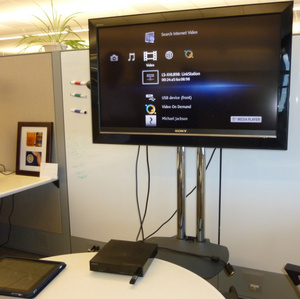 Coming this fall, Sony will release the SMP-N100, a DLNA (Digital Living Network Alliance) client capable of streaming content from your home network, as well as online video services like Netflix, YouTube, Amazon, several Sony exclusives online, and many others. The device will be similar to Sony’s Bravia Internet-enabled Blu-ray players, but will cost only $129 and offer more content.
Coming this fall, Sony will release the SMP-N100, a DLNA (Digital Living Network Alliance) client capable of streaming content from your home network, as well as online video services like Netflix, YouTube, Amazon, several Sony exclusives online, and many others. The device will be similar to Sony’s Bravia Internet-enabled Blu-ray players, but will cost only $129 and offer more content.
When it is released, the SMP will be a direct competitor to other streaming set-top boxes like the Roku, the Popbox, and possibly the next AppleTV when it eventually is detailed.
The SMP will stream all of the features that Sony’s Internet-enabled Blu-ray devices offer, including Netflix, YouTube, VoD, Pandora, Amazon, and Slacker. The device will also offer exclusive Sony video content, including everything on the PlayStation Network. There will, however, not be any way to stream Hulu or Boxee — at least for now.
The SMP will feature HDMI connections, a USB port to play media, and a built in 802.11n wireless modem. There is currently an iPad app for the Sony Bravia Internet service, so a comparable app for the SMP is likely on the way.
The SMP is set to ship later this fall for $129, but CEPro, who had a chance to test the unit out are, are suggesting that the price may drop to $99 before Christmas.


